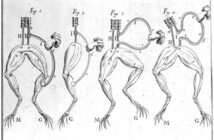
Image courtesy of Wikipedia.org
British mathematical physicist and engineer William Thomson, who is better known as Lord Kelvin, was born in Belfast in 1824. Thomson is best known today for inventing the international system of absolute temperature, stated in units of kelvin, which bear his name. His other notable works include contributions to electricity, magnetism, thermodynamics, hydrodynamics, geophysics and telegraphy among other fields.
An extremely skilled engineer, Thomson is accredited with roughly 70 inventions and publishing more than 650 papers during his lifetime. Thomson was knighted by Queen Victoria in 1866 for his significant involvement in the laying of the first transatlantic telegraph cable.
Thomson did more work than any other electrician, up to his time, to introduce accurate methods and tools for measuring electricity. He published a description of his new divided ring electrometer in the Memoirs of the Roman Academy of Sciences for 1857, which was based on the old electroscope of Johann Gottlieb Friedrich von Bohnenberger. He also invented a series of effective instruments, including the quadrant electrometer, which encompass the entire field of electrostatic measurement.
Among his other inventions was the current balance, also known as the Kelvin balance or Ampere balance, for the precise specification of the ampere, which is the standard unit of electric current.
Thomson headed an international commission in 1893, to decide on the design of the Niagara Falls power station. He endorsed Westinghouse’s alternating current system, which was demonstrated at the Chicago World’s Fair that year, despite his belief in the superiority of direct current electric power transmission.
In November 1907 William Thomson caught a chill and his condition quickly deteriorated until he died at his Scottish residence, Netherhall, in Largs on December 17th of that year, leaving behind a legacy which makes him one of the most eminent scientists of the 19th century.
Related articles:



